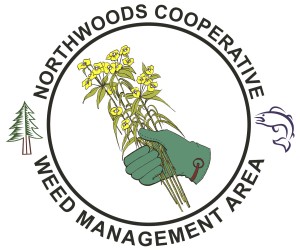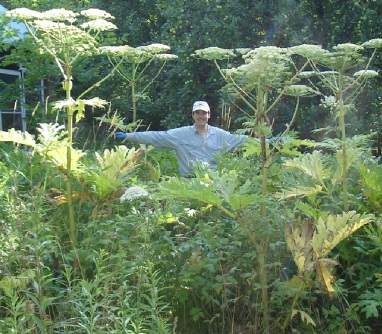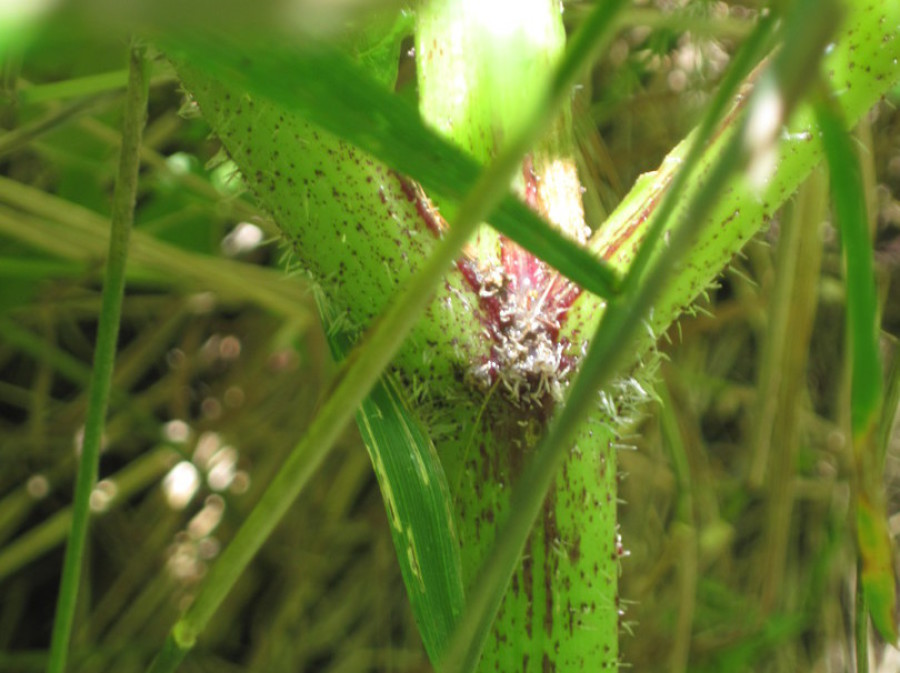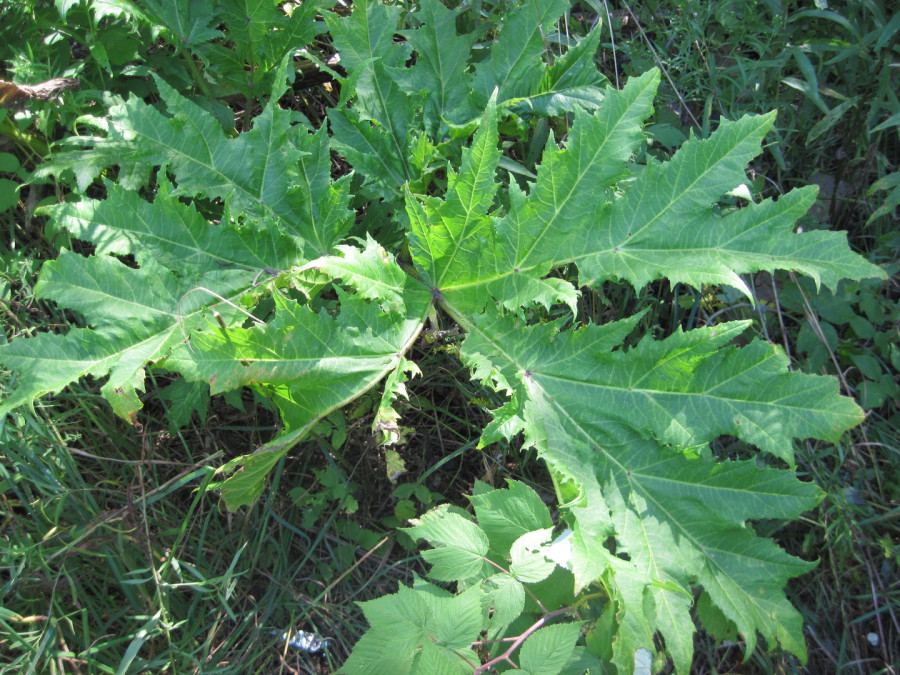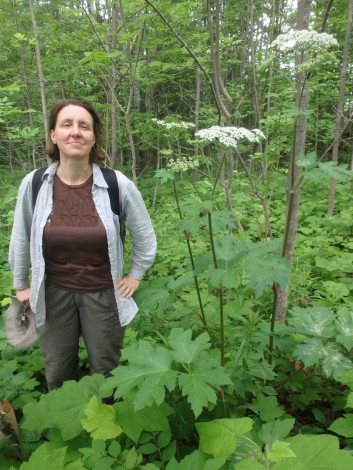Giant Hogweed (Heracleum mantegazzianum)
Like wild parsnip, giant hogweed can cause severe blisters if the sap comes in contact with skin, followed by sunlight. Any sites should be reported to the NCWMA. The only known sites in our region are in Iron County. The known sites have been treated and are under control. Each site is monitored annually. Sites are typically at old homestead sites. People often mistake American cow parsnip for giant hogweed. See the PDF below and information on this page to distinguish the two.
Basic Characteristics
Very tall: 8-20’ tall
American Cow Parsnip (Heracleum maximum)
Native species that is confused with giant hogweed.
Basic Characteristics
- 6 to 8 feet tall (usually smaller than hogweed)
- Stem not so thick: 1-2 inches diameter.
- Often the stem has a few bends.
- Not purple mottling on stem, although it may be reddish
- Leaves not as large (2.5 feet wide)
- Leaves are a similar shape, but not as sharply toothed.
- White flowers in umbels, but not as wide (up to 1 ft wide).
- Umbels with 15 to 30 rays.

